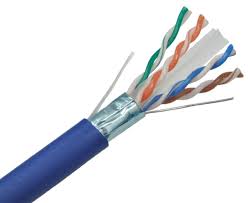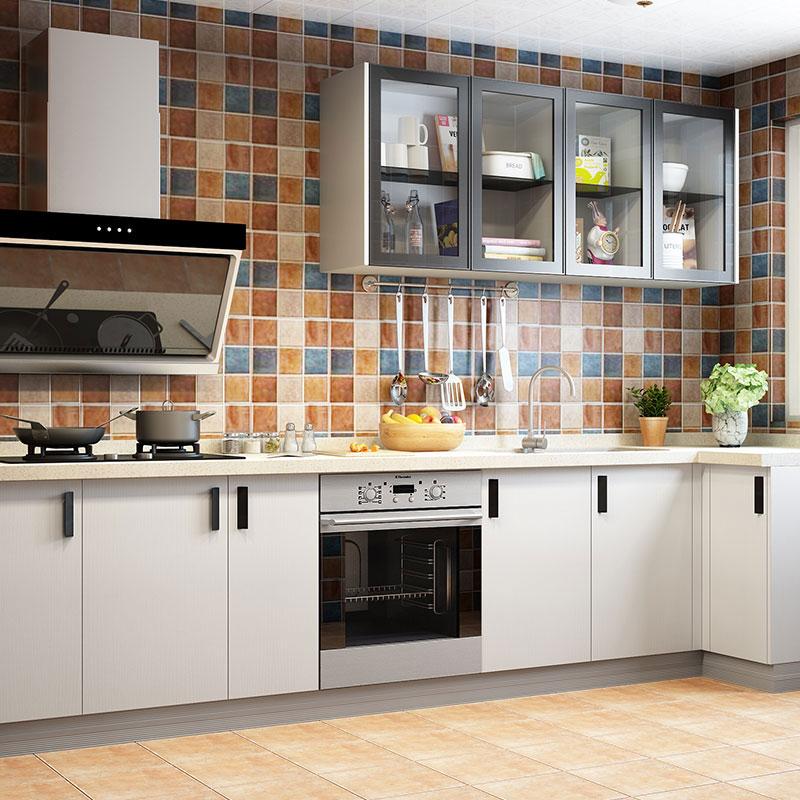
Let’s cut to the chase: if you’re aiming for reliable 10-Gigabit Ethernet performance in an environment riddled with electrical noise, Shielded Cat6a cables should be at the top of your list. No fluff, no marketing spin—just facts, performance, and real-world impact.
What Makes a Shielded Cat6a Cable Different?
Before we get into the “why,” let’s look at the “what.”
Cat6a stands for Category 6 augmented. It was introduced to support 10GBASE-T (10 Gigabit Ethernet) over a full 100 meters. But the real differentiator here is the shielding.
There are two main types of Ethernet cabling:
-
Unshielded Twisted Pair (UTP)
-
Shielded Twisted Pair (STP)
Shielded Cat6a cables fall under STP. They include foil or braided shielding around each pair (or around all pairs collectively) to block Electromagnetic Interference (EMI) and Radio Frequency Interference (RFI).
And in high-interference zones—think data centers, industrial setups, hospitals, or areas near HVACs or heavy machinery—this shielding makes all the difference.
Why 10G Needs Protection in Noisy Environments
Let’s get practical. A 10G connection isn’t just about raw speed. It’s about:
-
Low latency
-
Stable throughput
-
Minimal packet loss
Now imagine running 10G connections near large motors, power supplies, or fluorescent lighting. EMI from these sources wreaks havoc on unshielded cables. You get crosstalk, jitter, degraded signal integrity, or worse—complete link failure.
Shielded Cat6a cables create a protective barrier, ensuring that external interference doesn’t corrupt the data flying through your lines.
Where Shielded Cat6a Cables Outperform Unshielded Alternatives
1. Data Centers and Server Rooms
This is mission-critical territory. These environments are dense with electronics, and the last thing you need is packet loss due to interference. Shielded Cat6a delivers consistent performance across full cable lengths—even with patch panels, keystone jacks, and dense cable runs.
2. Industrial and Manufacturing Facilities
Machinery, robotic arms, variable frequency drives—these are noise factories. Shielded cabling stands up to these harsh environments where UTP simply can’t.
3. Medical Facilities
Hospitals are full of EMI sources: MRI machines, diagnostic equipment, wireless telemetry. For healthcare IT infrastructure, interference isn’t just inconvenient—it’s dangerous. Shielded Cat6a helps ensure signal integrity and data accuracy.
4. Broadcast Studios & Control Rooms
Audio-visual signals are sensitive to noise. For studios transmitting 4K or 8K content over Ethernet, shielding is essential to maintain clarity and avoid dropped frames or signal distortion.
Shielding Types in Cat6a Cables: What’s What
Not all shielded cables are created equal. Here’s the breakdown:
| Shielding Type | Abbreviation | Description |
|---|---|---|
| Foiled Twisted Pair | F/UTP | Overall foil shield around all four pairs |
| Shielded Twisted Pair | S/FTP | Braided screen around cable + foil around each pair |
| Foil Shielded Each Pair | F/FTP | Foil shield around each individual pair |
| Unshielded | U/UTP | No shielding—only twisted pairs |
For noisy environments, S/FTP or F/FTP gives you maximum protection.
Key Benefits of Shielded Cat6a Cables
✅ Superior Noise Immunity
The shielding actively deflects EMI and RFI, which keeps your signal clean and strong. This matters when uptime and accuracy are non-negotiable.
✅ Enhanced Crosstalk Reduction
Alien Crosstalk (AXT) is a common issue in high-speed networks. Shielding helps prevent adjacent cables from interfering with each other—a major plus for dense bundles.
✅ Full 10G Support Over 100 Meters
UTP Cat6 can technically do 10G, but only up to 37 meters in ideal conditions. Shielded Cat6a is designed for 100 meters of stable, uninterrupted 10G performance.
✅ Futureproofing Your Infrastructure
Data needs aren’t shrinking. Investing in shielded Cat6a now gives you headroom for high-speed applications like video streaming, cloud computing, and AI workloads.
But Wait—Aren’t Shielded Cables Harder to Work With?
Yes, there are a few trade-offs. Let’s address them upfront:
❌ Grounding Required
Shielded cables need to be grounded properly, or you risk creating an antenna that attracts even more interference. This means careful planning and proper connectors.
❌ Slightly Bulkier
The shielding adds a bit of girth, making these cables less flexible than UTP. That can be a challenge in tight spaces or high-density panels.
❌ Slightly Higher Cost
You’ll pay more—no surprise there. But for critical networks, the performance gain outweighs the upfront cost.
Bottom line? These challenges are manageable with good planning and trained techs. The payoff in signal quality and reliability is worth it.
Shielded Cat6a in Action: Real-World Use Cases
🏢 Corporate IT Infrastructure
A large law firm replaced their aging UTP network with Shielded Cat6a. Result? 10G file transfers became seamless, and conference call drops due to packet loss disappeared.
🏭 Automotive Factory Floor
After switching from Cat5e to shielded Cat6a, a major manufacturer saw a 60% drop in network errors. The lines stayed clear even during full production.
🏥 Hospital Network Backbone
A regional hospital upgraded to Cat6a STP across critical care units. Medical imaging data now travels cleanly at 10G, with no interference from nearby machines.
Tips for Installing Shielded Cat6a Cables
-
Use Shielded Patch Panels & Jacks
Don’t mix shielded cable with unshielded connectors. That defeats the purpose. -
Plan Your Grounding Strategy
Grounding should be continuous from end to end—no breaks. -
Avoid Sharp Bends & Tension
Shielded cables can be stiff. Use wide cable management and avoid tight turns. -
Test Everything Post-Install
Use certified cable testers that support shield continuity tests. -
Keep Away from Power Lines
Even with shielding, it’s best practice to maintain separation from high-voltage lines.
When Not to Use Shielded Cat6a
Let’s be fair—sometimes, shielded Cat6a is overkill. In quiet, interference-free environments like small offices or residential installs, UTP Cat6a or even Cat6 might be enough.
Use your judgment. Don’t spend money on shielding you don’t need.
Wrapping It Up
Here’s the thing: if your network lives in a noisy environment and you’re running 10 Gigabit Ethernet, Shielded Cat6a isn’t just a nice-to-have—it’s essential. Yes, it’s a bit more expensive and takes extra care during installation. But what you get in return is stability, speed, and peace of mind.
No dropped packets. No mystery latency spikes. Just clean, fast data—exactly how a modern network should behave.
If you’re building something that needs to just work, especially under heavy load and in tough conditions, Shielded Cat6a should be your go-to.





